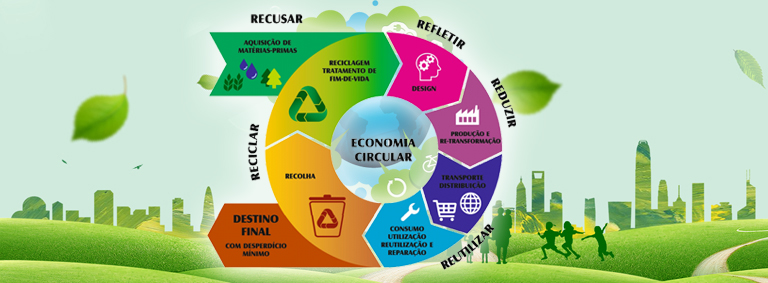Economic development and its negative impact on the environment have always been a point of debate and in today’s world of high carbon emission, this has reached higher levels in recent years. Industry has been making all efforts to contribute positively towards this end.
Slag, which used to be considered as a waste generated in the iron and steelmaking process in the linear economy, has assumed an elevated status of co-product in the circular economy as we have started realising the potential value of the product.
Technological development in the production and processing phases, aimed at producing co-products like value-added iron and steel slag with uniform and improved properties, is a continuous effort that will further increase slag usage rates and, more importantly, expand their use by improving the quality of the materials recovered. Recent developments include demand management and refocusing the production process to better control the properties of iron as well as steel slag.
Iron Slag or Blast Furnace Slag (BF Slag) is generated during manufacturing of Pig Iron whereas Steel/LD Slag is generated during manufacturing of Crude Steel. Primarily, slag consists of Calcium, Magnesium, Manganese and Aluminium Silicates in various combinations. Almost all Iron/BF Slag generated in the Steel value chain is utilised in different applications such as cement making, as a replacement for natural fine & coarse aggregates and as GGBS for partial replacement of OPC, etc.
On the other hand, utilisation of Steel/LD Slag in India is below 50 per cent of the total generation. However, it also has great potential in many other applications:
- As a replacement for natural aggregates for road making
- As a replacement for natural aggregates for rail ballast
- In Clinker/Cement making
- As soil conditioner in agriculture
- Restoration of Marine Ecology
With increase in construction activity in India, the demand for natural aggregates is likely to rise significantly. On testing Steel/LD Slag, it has been found suitable to be used as a replacement for natural aggregates and alternate to concrete in certain applications. Most of the properties of Steel/LD Slag are better than most of its alternate materials. The innovative Steel/LD Slag applications are going to be a solution to two major national concerns.
- Address the evacuation and utilisation of Steel/LD Slag thus eliminating the herculean task of land identification for its disposal.
- Prevents rock and sand mining for natural aggregates thereby preventing environment degradation.
The best part of Steel/LD Slag is that, in almost each application, the usage is going to bring down the overall cost as compared to using alternate material.
Beneficial use of steelmaking co-products like slag will reduce the energy and emissions required to make equivalent products. Their use should, therefore, be given preferential treatment, or at least be encouraged.
It is necessary in legislation to clearly differentiate co-products from waste so as to improve the perception of co-products and encourage their use. Studies reveal that it is possible to substitute equivalent primary products for co-products like slag within the same legal framework. This should include the application of identical quality and environmental testing requirements and limits for primary and secondary materials. For example, specification levels for slags used in road construction should also be applicable to natural aggregates of diverse geological origin and vice-versa.
More and more trials for increasing the scope of uses should be facilitated and comparisons with primary products should be avoided to the extent possible by factoring in the sustainability aspect of utilisation of a co-product in a gainful manner. Furthermore, the development of international/ regional quality standards for applications of slag may improve public and political perception of slag-based sustainable products like cement. Therefore, the use of co-products should be encouraged, thereby saving natural resources and energy.
The use of co-products has contributed to a material efficiency rate in the steel industry of 96.3 per cent worldwide (average of all steel industry efficiency rates). Our goal is 100 per cent efficient use of raw materials and zero waste and this can only be achieved when we ensure 100 per cent utilisation of iron as well as steelmaking slag. This would increase resource efficiency, prevent landfill waste as also reduce CO2 emissions.
Government can play key role in incentivising the utilisation of co-products. At present, GST applicable for slag stands at 18 per cent, which is very high and can be reduced to 5 per cent. Railways can also reduce the class from 140 to 120. By reducing the class, the freight on slag will be lower. This will help in promoting its utilisation by carrying it to a greater distance.
Efficient resource use and treating waste-to-wealth are keys to achieving a sustainable circular economy. For example, replacing Portland cement with Slag cement in concrete can save up to 59 per cent of the embodied CO2 emissions and 42 per cent of the embodied energy required to manufacture concrete and its constituent materials. There is the need for a holistic approach in the use of co-products like slag where all environmental, energy and resource aspects are considered. All stakeholders must strive for positive policy changes and development of new applications to ushering in a new era of truly circular economy.
(The author is Co-Chair, FICCI Mining Committee and Chief Regulatory Affairs, Tata Steel Limited)





